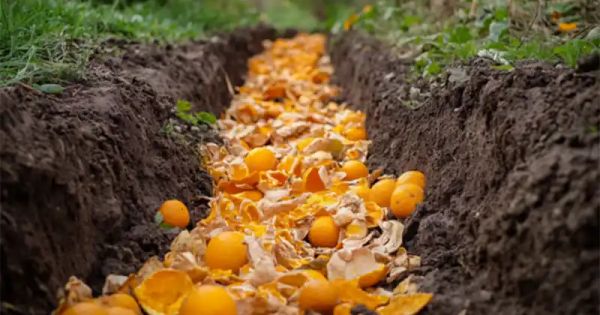Do you love gardening and want to naturally enrich your soil? Don’t throw away those citrus peels! They are packed with nutrients that can transform your garden into a thriving oasis. Burying citrus peels is an eco-friendly practice that promotes plant growth and reduces waste. In this article, we’ll explore why and how you should incorporate citrus peels into your gardening routine for healthier plants.
Why Bury Citrus Peels?
Citrus peels, like orange, lemon, and lime peels, are rich in essential nutrients such as nitrogen, phosphorus, and potassium. When buried in the soil, these peels decompose quickly and release valuable nutrients that improve soil health. They also contain natural compounds that deter pests, offering a double benefit for your garden. This sustainable practice is perfect for gardeners who want to make the most of their kitchen scraps and enhance soil quality.
Step-by-Step Guide to Burying Citrus Peels
- Choose the Right Spot: Select an area in your garden where you plan to grow nutrient-hungry plants like leafy greens, tomatoes, or root vegetables. These plants will benefit the most from citrus peels.
- Prepare the Soil: Dig a trench or hole in the designated area, ensuring it is deep enough to fully cover the citrus peels. This also helps aerate the soil and promote healthy root development.
- Add Citrus Peels: Evenly distribute a variety of citrus peels at the bottom of the trench. Spreading them in a single layer helps them decompose efficiently.
- Enhance with Dolomite Lime: Sprinkle a generous amount of dolomite lime over the citrus peels to further enrich the soil and balance its pH levels. Dolomite lime neutralizes acidity and supports beneficial microbes that aid in decomposition.
- Cover and Wait: After applying the dolomite lime, cover the peels with the soil and lightly pat it down. The soil may appear raised initially but will settle as the peels decompose.
Benefits of Burying Citrus Peels
- Nutrient Boost: Citrus peels release essential nutrients that promote robust plant growth, providing consistent nourishment over time.
- Pest Deterrence: The natural oils in citrus peels repel pests like ants and aphids, reducing the need for chemical pesticides.
- Improved Soil Structure: Decomposing organic matter enhances soil structure, improving moisture retention and supporting root growth.
- Waste Reduction: Burying citrus peels turns kitchen waste into valuable compost material, reducing landfill contributions.
Planting After Burying Citrus Peels
Allow the soil to settle for a few weeks after burying the citrus peels. This gives the peels time to break down and allows the soil to regain its natural level. Once settled, you can start planting your crops. Leafy greens like choy and rainbow chard thrive in nutrient-rich soil enriched by citrus peels.
Additional Tips for Gardening with Citrus Peels
- Prevent Overuse: While citrus peels are beneficial, avoid using too many, as they can make the soil too acidic and harm some plants.
- Use Filtered Water: When watering your garden after adding citrus peels, consider using filtered water to avoid chlorine interference with the decomposition process.
- Experiment with Other Additions: Enhance your citrus peel composting by adding other kitchen scraps or organic matter. For example, you can make your own natural citrus seed pectin to further utilize citrus waste.
Burying citrus peels is a sustainable and effective way to enrich your garden’s soil and promote strong plant growth. Whether you’re an experienced gardener or just starting out, this technique is easy to implement and yields impressive results. So, instead of tossing those citrus peels, let them work their magic in your garden. And if you’re feeling ambitious, consider propagating lemon trees from cuttings for a continuous supply of homegrown citrus goodness.
